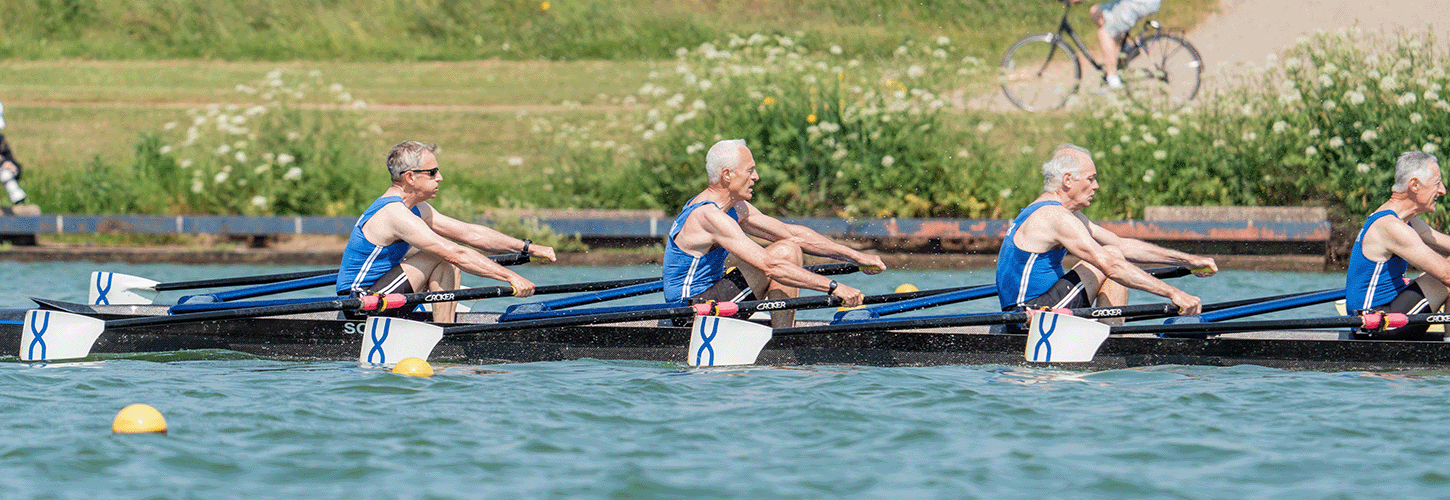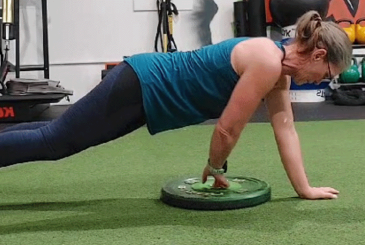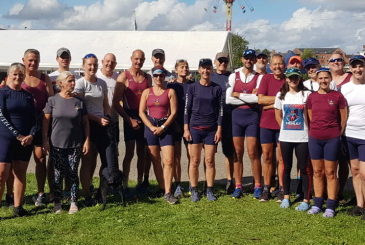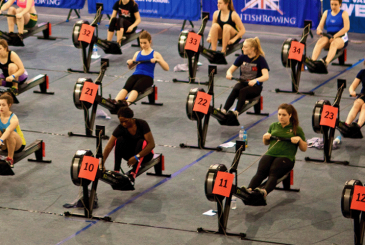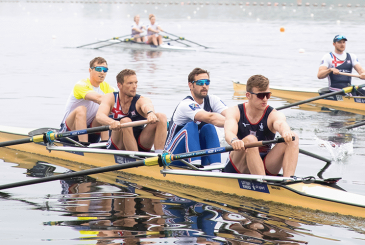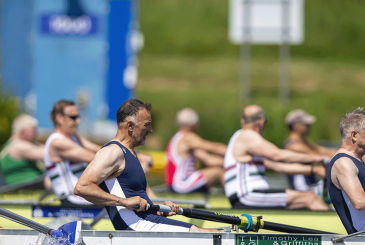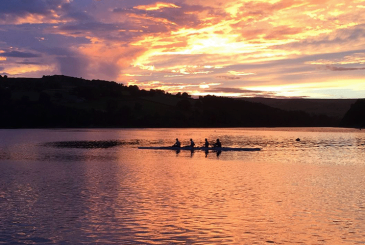Age-related changes in key body systems cause ‘wear and tear’ in the ability to train and compete as we age. Exercise physiologist Dr Mark Homer explains more about the physiology of masters racing but also suggests some ways in which these changes can be managed or even reduced to keep rowing as fast as possible for as long as possible.
Before I start the (rather depressing) explanation of how the human body’s functions decline with advancing age, it is worth noting that it wasn’t a million years ago (it was actually more like 10,000) that 30 years old was considered a ‘good innings’, if death by sabre toothed tiger or the Ice Age winter could be avoided. Advances in agriculture and medical science (amongst other things) in the intervening years have led to that number being tripled for those in affluent countries. With this comes an increased awareness of changes to the body (and mind) as people progress through the second half of life.
For many, lifestyle choices such as poor nutrition and inactivity contribute to short- and long-term illness that lead to living a significant percentage of their lives in poor health. But even those who eat healthily and do more, particularly if they pushed their bodies when they were at their ‘peak’, will see and feel a deterioration in internal and external statistics like heart rate and ergo splits.
Age-related physical changes that impact rowing speed
Cardio-respiratory system degradation
As you know, rowing is a strength-endurance sport. This means it relies heavily on our bodies’ ability to take in, transport, and use oxygen to break down nutrients and produce energy. Beyond our thirties, there are significant changes to the main systems that contribute to the endurance element of rowing performance.
First, the respiratory system loses some of its elastic qualities with age and is able to use fewer of the alveoli (the structures where oxygen is transferred to the blood).
The heart’s capacity for pumping blood is also reduced. The most-used equation for calculating your maximum heart rate is 220 minus your age. This suggests that the heart’s contractile rate decreases over time and is caused by impaired nervous system function. That said, this is partially compensated by the heart being able to push more blood through ‘per beat’ as a result of an increased ability to fill up between contractions.
“Oxygen’s journey to the muscle is hampered at every stage by an ageing body”
Finally, in the circulatory system, the ability to respond to changes in blood pressure is reduced. The blood vessels become stiffer and thicker – reducing the exchanges of oxygen, nutrients, and waste products. These changes manifest themselves in higher blood pressure.
So, oxygen’s journey to the muscle is hampered at every stage by an ageing body. Unfortunately, this does not end when it gets to its destination. Mitochondria, the site for energy production, also start to degrade and become fewer in number. This is due to changes in hormone production (which also increases the need for recovery time between exercise bouts), and a reduction in muscle mass and ability to build new muscle. The combination of these changes can influence maximal oxygen consumption (O2max), a big determinant of rowing speed as well as being a good all-round marker of fitness.
However, some good news is that research suggests that aged skeletal muscle does not have a reduced ability to extract oxygen. It seems that a benefit of more years, is more time to train. This can be demonstrated by high capillary (our smallest blood vessels) density and improved efficiency, developed through years of training.
Reduced muscle mass
The diminished muscle mass mentioned earlier will have an obviously effect on the ability to generate force. This is caused by a decrease in protein metabolism and recycling of used and damaged proteins. The connections between the brain and muscle are also reduced with ageing, meaning recruiting the remaining muscle becomes harder. However, some research looking at the neuromuscular messaging in a group of octogenarian world-class runners, identified new connections between the brain and muscle to limit reductions in muscle recruitment.
How to minimise the effects of ageing on rowing speed
So, what can be done to manage this transition and limit its effect on boat performance? Well, the good news is besides its ability to treat most physical and mental conditions, exercise training can also combat the effects of ageing.
Endurance training
The best use of time and effort is not unlike the components of a young person’s training programme. Cardio-respiratory endurance training, as previously hinted, will help maintain cardiac output though improved stroke volume (the blood ejected from the heart in a single beat) and adaptations in the periphery such as blood flow and oxygen uptake at the muscle. This needs to include long-steady, low intensity rows (around 80% of volume) and occasional (1-2 sessions per week) high-intensity intervals e.g. 3x1km.
Strength training
It is important to include some (or more) strength work into a weekly exercise routine. Increasing the stimulus for muscle growth by regularly completing some compound exercises (multi-muscle group) will help offset muscular atrophy and maintain the mass you need to put in a big 10 strokes when required. Table 1 in the Position Statement from the National Strength and Conditioning Association provides some guidance on designing a suitable programme for masters.
Using free-weights provides the added bonus of developing balance – another decline that occurs with ageing. Combine these weight sessions with some quality protein intake (20g).
Recovery
Perhaps most importantly, we need to think more carefully about recovery – both between sessions and after racing. Not doing the extra session or reducing the intensity of steady state rows will help the body to recuperate and enhance the response to and enjoyment of subsequent training. Maybe replace a session or two with some mobility exercises that will enhance your rowing. Maintaining (during training) and restoring (after training) carbohydrate stores will help to repair and recover.
Conclusion
Time waits for no one. However, it also generally provides opportunities for more training and the positive effects that can bring. A balanced training programme that includes good recovery and nutrition can compensate for a fair amount of age related decline. In Raiders of the Lost Ark, Indiana Jones states “it’s not the years… it’s the mileage” when it’s suggested he isn’t the man he was ten years ago. He was wrong – the mileage is the solution, not the problem! So long as you recover well afterwards, of course.
Key points
- Reduced capacity and efficiency of the oxygen transport system and diminished muscle mass are two key reasons why we row slower as we get older
- To minimise these effects, masters rowers should include cardio-respiratory sessions, strength work and mobility sessions in their training.
- Sufficient rest and good nutrition are essential for effective recovery.
You may also be interested in…
- Masters injuries and how to avoid them
- Pilates for rowers
- Moving the boat efficiently – good technique for masters
Photo: AllMarkOne


